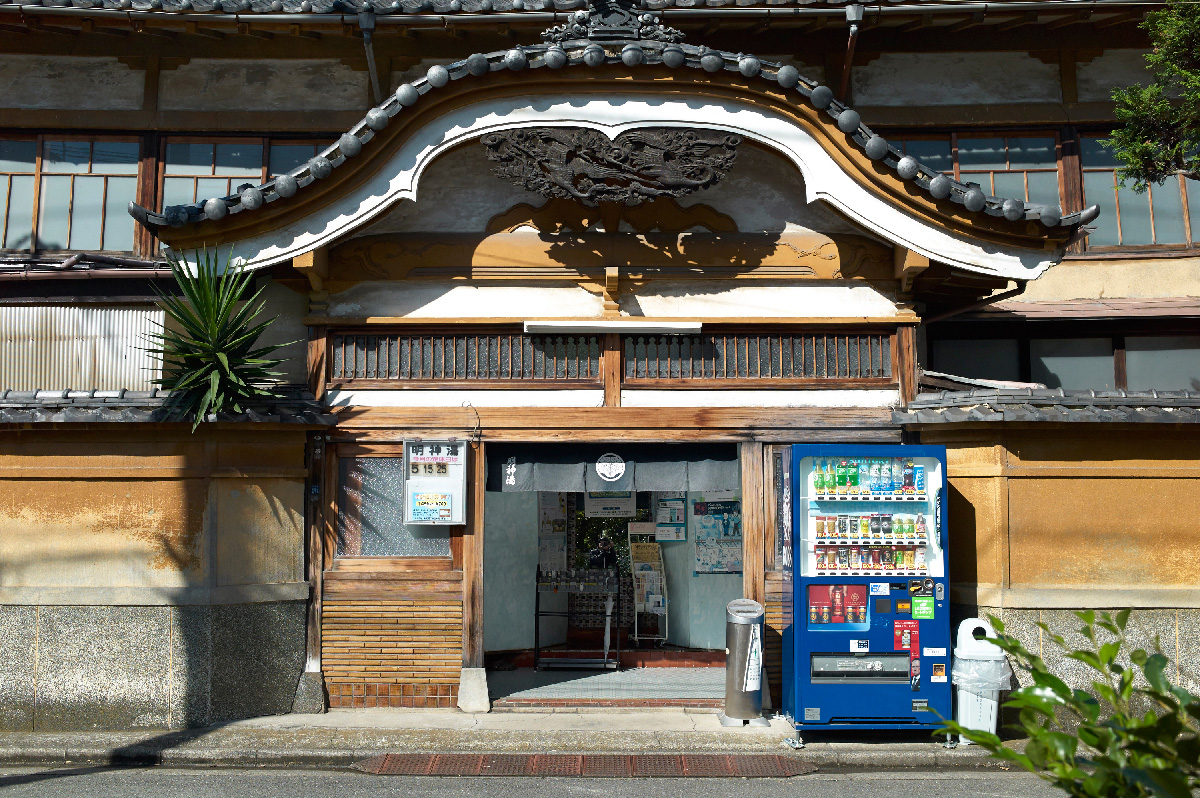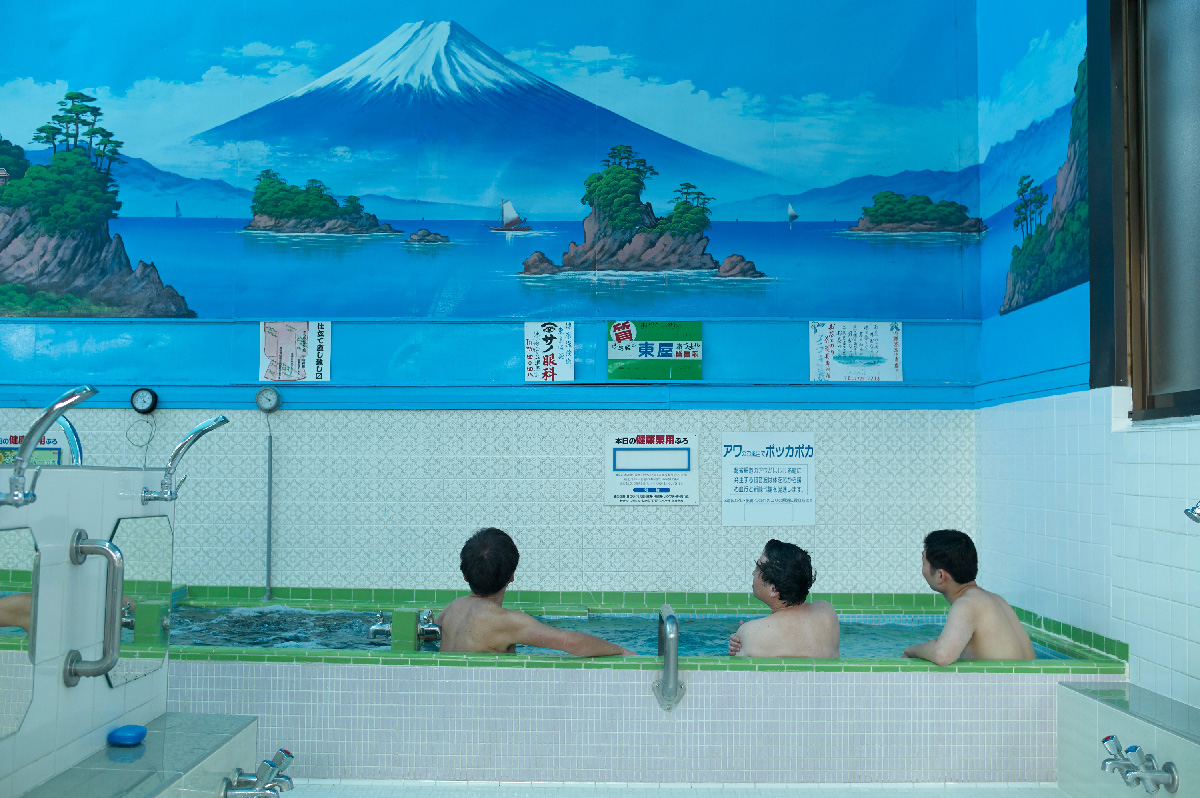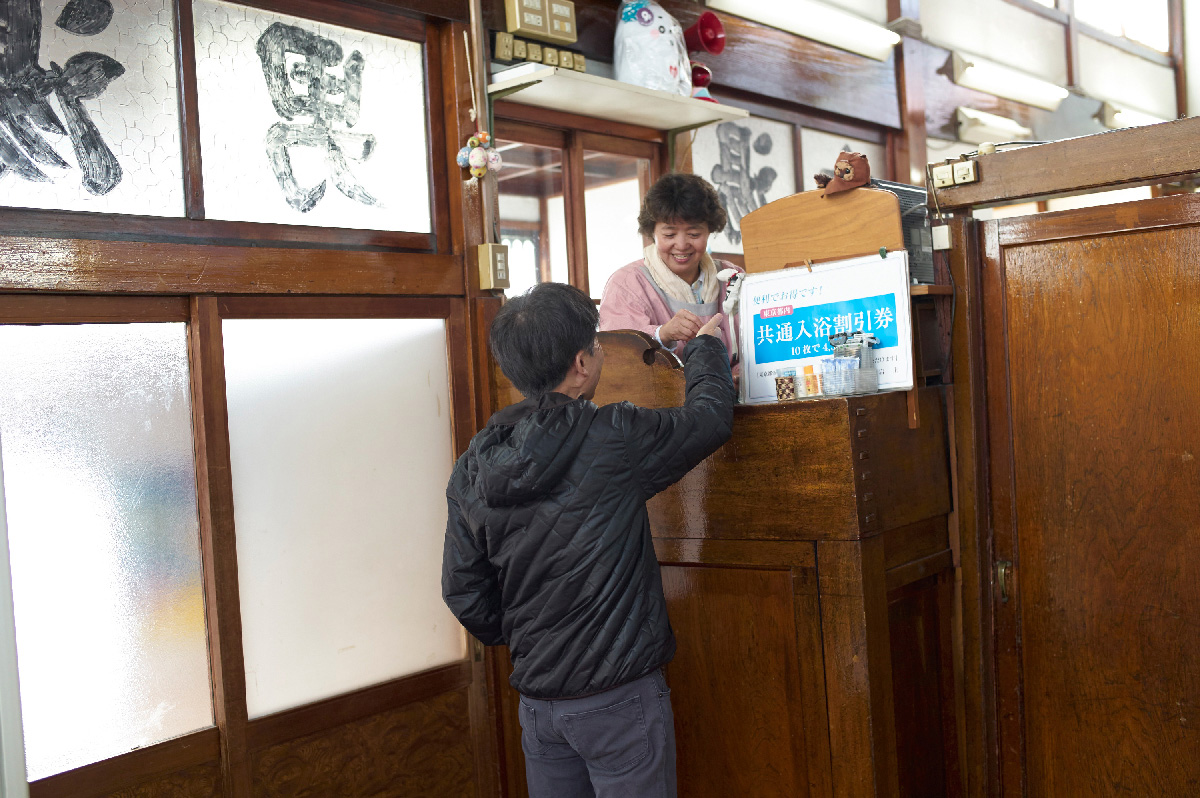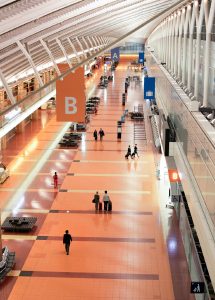Etiquette of Kakeyu at Sento
Pour the Hot Water from Your Toe
“Myojinyu” is the name of sento which has been in business since 1957 and still maintains the traditional style of sento. The structure of the building is Karahafu (a Chinese cusped gable) with a coffered ceiling over changing room and painted Mt. Fuji in the bath room. This used to be a typical when it comes to sento. The customers put away their shoes to shoe shelf at the entrance and pay at Bandai which is a table the owner sits. They take off their clothes in the changing room and go into the bath room. But before they go straight into the bathtub, they pour a bucket of water from tap at the shower and pour it over to themselves. As a lot of people share the huge bathtub it is an important manner that you first wash yourself before get soaked into the bath water. Also, pouring hot water to yourself is a way to avoid the acute rise of the blood pressure resulted by the sudden temperature change. The correct way to pour the hot water is to pour from your toe and get closer to your heart gradually.

Different Manner of Kakeyu in East and West Japan
The manner of kakeyu is different from East Japan to West Japan. In Tokyo, we use the hot water poured from the tap for kakeyu, but in Kansai (West Japan) they scoop up the hot water from the bath. The bucket people use to scoop the hot water is smaller in Kansai so that it is easier for people to do so, and the bath tub is placed in the centre of the room while it is placed in the corner in other areas in Japan. The baskets to put clothes in the changing room are round shaped in Kanto (East Japan) but rectangular shape in Kansai. As having a painted Mt. Fuji on the bathroom wall started in Tokyo, so you can see more of them in Kanto area. There are unique features found at sento by region.

Sento Become a Place Where People All Over the World Gather
As having a bathroom at people’s home became standard, the number of sento in Tokyo has decreased to 706 in 2013 whereas there used to be 2,641 stenos in Tokyo in 1965. However, sento is starting to attract young people’s attention as the place to show Japanese culture. The owner of Myojinyu says “Nowadays more and more people come to sento the first time after they became adults. Also we have a lot of foreign tourists come in carrying their guidebook in their hand.” At Myojinyu you can find the brochures to explain how to take a bath in both Japanese and English on bandai. Sento used to be a place where people come and relax in their daily life but now it became a place where people can experience a part of Japanese culture. Even though people’s lifestyle is different, the manner of kakeyu is universal as it is an act of caring others who they are going to share the bathtub with. This care supports the lives of sento.

Data
| When did it start? | In the 6th century Buddhism came to Japan then it encouraged bathing. Along with that bathroom was facilitated at temples and they opened the bathroom for the poor. At the end of Heian period ‘yuya’ (where people pay to take a bath) started to appear in Kyoto and it is said that this is the origin of sento. Sento started to appear in Tokyo at the beginning of Edo period. |
| Where can I experience this? | 628 sentos are still in business in Tokyo (In 2015) |
| Best suited time of the year or of the day? | In the winter you can warm yourself from the core in a huge bathtub and in the summer you can enjoy the cold milk coffee after taking the bath. You can enjoy sento any time of the year. As for the time of the day, the best time is to go early evening to avoid the crowdedness. |
| Data (Space, Weight, Number (Year/Month/Day)) | Fee at sento in Tokyo: ¥460 per adult (Over 12 years old / Data based in 2014) The birth of the painting of Mt. Fuji: In 1912 Average weight of bathing bucket: 360g in Kanto, 260g in Kansai |
| Please note | It is against the manner to go back to the changing room from the bathroom with wet body, as well as going into a bath without kakeyu. Make sure to wipe off the water from your body before going out of the bathroom. |
Reference:
『Naked Community Center: The story of Sento tying to survive by connecting with the community deeply』 (The Asahi Shimbun Company)
『The Tokyo Sento』By Shinobu Machida (Ebisukosyo Shuppan)
『Tokyo Sento』



